�
LINEAR CIRCUIT
TRANSFER FUNCTIONS
�
�
LINEAR CIRCUIT
TRANSFER FUNCTIONS
AN INTRODUCTION TO FAST
ANALYTICAL TECHNIQUES
Christophe P. Basso
ON Semiconductor, Toulouse, France
�
This edition first published 2016
2016 John Wiley & Sons, Ltd
Registered office
John Wiley & Sons Ltd, The Atrium, Southern Gate, Chichester, West Sussex, PO19 8SQ, United Kingdom
For details of our global editorial offices, for customer services and for information about how to apply for permission to
reuse the copyright material in this book please see our website at www.wiley.com.
The right of the author to be identified as the author of this work has been asserted in accordance with the Copyright,
Designs and Patents Act 1988.
All rights reserved. No part of this publication may be reproduced, stored in a retrieval system, or transmitted, in any form
or by any means, electronic, mechanical, photocopying, recording or otherwise, except as permitted by the UK Copyright,
Designs and Patents Act 1988, without the prior permission of the publisher.
Wiley also publishes its books in a variety of electronic formats. Some content that appears in print may not be available in
electronic books.
Designations used by companies to distinguish their products are often claimed as trademarks. All brand names and product
names used in this book are trade names, service marks, trademarks or registered trademarks of their respective owners.
The publisher is not associated with any product or vendor mentioned in this book.
Limit of Liability/Disclaimer of Warranty: While the publisher and author have used their best efforts in preparing this
book, they make no representations or warranties with respect to the accuracy or completeness of the contents of this book
and specifically disclaim any implied warranties of merchantability or fitness for a particular purpose. It is sold on the
understanding that the publisher is not engaged in rendering professional services and neither the publisher nor the author
shall be liable for damages arising herefrom. If professional advice or other expert assistance is required, the services of a
competent professional should be sought
Library of Congress Cataloging-in-Publication Data
Names: Basso, Christophe P., author.
Title: Linear circuit transfer functions : an introduction to fast analytical
techniques / Christophe Basso.
Description: Chichester, West Sussex ; Hoboken, NJ : Wiley, 2016. | Includes
index.
Identifiers: LCCN 2015047967 | ISBN 9781119236375 (cloth) | ISBN 9781119236351
(epub)
Subjects: LCSH: Transfer functions. | Electric circuits, Linear.
Classification: LCC TA347.T7 B37 2016 | DDC 621.3815–dc23 LC record available at http://lccn.loc.gov/2015047967
A catalogue record for this book is available from the British Library.
ISBN: 9781119236375
Set in 9.5/11.5 pt TimesLTStd-Roman by Thomson Digital, Noida, India
1
2016
�
Contents
About the Author
Preface
Acknowledgement
1
1.1
1.2
Input and Output Ports
Electrical Analysis – Terminology and Theorems
Transfer Functions, an Informal Approach
1.1.1
1.1.2 Different Types of Transfer Function
The Few Tools and Theorems You Did Not Forget . . .
1.2.1
1.2.2
1.2.3
1.2.4 Norton’s Theorem at Work
The Voltage Divider
The Current Divider
Thévenin’s Theorem at Work
1.3 What Should I Retain from this Chapter?
1.4 Appendix 1A – Finding Output Impedance/Resistance
1.5 Appendix 1B – Problems
Answers
2
2.1
2.2
2.3
2.4
A Linear Time-invariant System
The Need for Linearization
Transfer Functions
Linear Systems
2.1.1
2.1.2
Time Constants
2.2.1
Transfer Functions
2.3.1
Low-entropy Expressions
2.3.2 Higher Order Expressions
2.3.3
2.3.4
2.3.5
2.3.6 How to Determine the Order of the System?
2.3.7
First Step Towards a Generalized 1st-order Transfer Function
Solving 1st-order Circuits with Ease, Three Examples
2.4.1
Second-order Polynomial Forms
Low-Q Approximation for a 2nd-order Polynomial
Approximation for a 3rd-order Polynomial
Time Constant Involving an Inductor
Zeros in the Network
ix
xi
xiii
1
1
3
6
11
11
12
14
19
25
26
37
39
41
41
43
43
44
47
49
54
59
60
62
68
69
76
78
82
�
vi
Contents
2.4.2 Obtaining the Zero with the Null Double Injection
2.4.3 Checking Zeros Obtained in Null Double Injection with SPICE
2.4.4 Network Excitation
2.5 What Should I Retain from this Chapter?
References
2.6 Appendix 2A – Problems
Answers
3
3.1
3.2
A Two-input/Two-output System
Superposition and the Extra Element Theorem
The Superposition Theorem
3.1.1
The Extra Element Theorem
3.2.1
3.2.2
3.2.3
3.2.4
3.2.5
3.2.6
3.2.7
The EET at Work on Simple Circuits
The EET at Work – Example 2
The EET at Work – Example 3
The EET at Work – Example 4
The EET at Work – Example 5
The EET at Work – Example 6
Inverted Pole and Zero Notation
3.3 A Generalized Transfer Function for 1st-order Systems
3.3.1 Generalized Transfer Function – Example 1
3.3.2 Generalized Transfer Function – Example 2
3.3.3 Generalized Transfer Function – Example 3
3.3.4 Generalized Transfer Function – Example 4
3.3.5 Generalized Transfer Function – Example 5
Further Reading
3.4
3.5 What Should I Retain from this Chapter?
References
3.6 Appendix 3A – Problems
Answers
References
Second-order Transfer Functions
4
4.1 Applying the Extra Element Theorem Twice
Low-entropy 2nd-order Expressions
4.1.1
4.1.2 Determining the Zero Positions
4.1.3
4.1.4
4.1.5
4.1.6
4.1.7
Rearranging and Plotting Expressions
Example 1 – A Low-Pass Filter
Example 2 – A Two-capacitor Filter
Example 3 – A Two-capacitor Band-stop Filter
Example 4 – An LC Notch Filter
4.2 A Generalized Transfer Function for 2nd-Order Systems
Inferring the Presence of Zeros in the Circuit
4.2.1
4.2.2 Generalized 2nd–order Transfer Function – Example 1
4.2.3 Generalized 2nd–order Transfer Function – Example 2
4.2.4 Generalized 2nd–order Transfer Function – Example 3
4.2.5 Generalized 2nd–order Transfer Function – Example 4
89
94
95
100
101
102
105
116
116
120
126
130
132
137
138
140
146
150
153
156
159
163
170
174
180
180
182
183
185
218
219
219
227
231
233
235
241
245
248
255
256
257
262
266
273
�
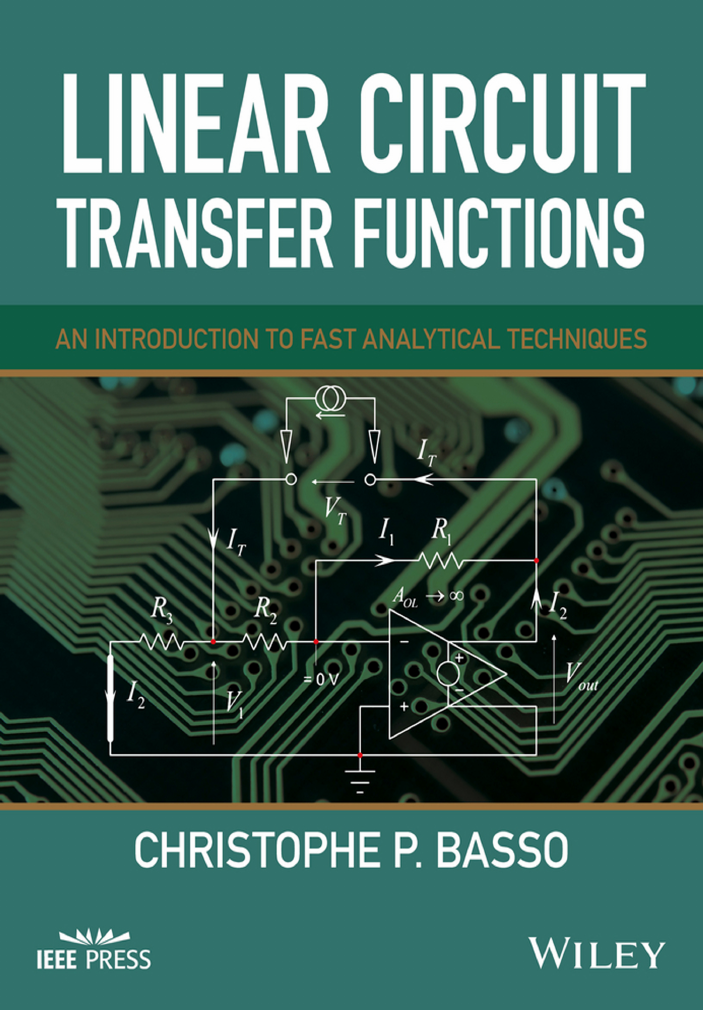

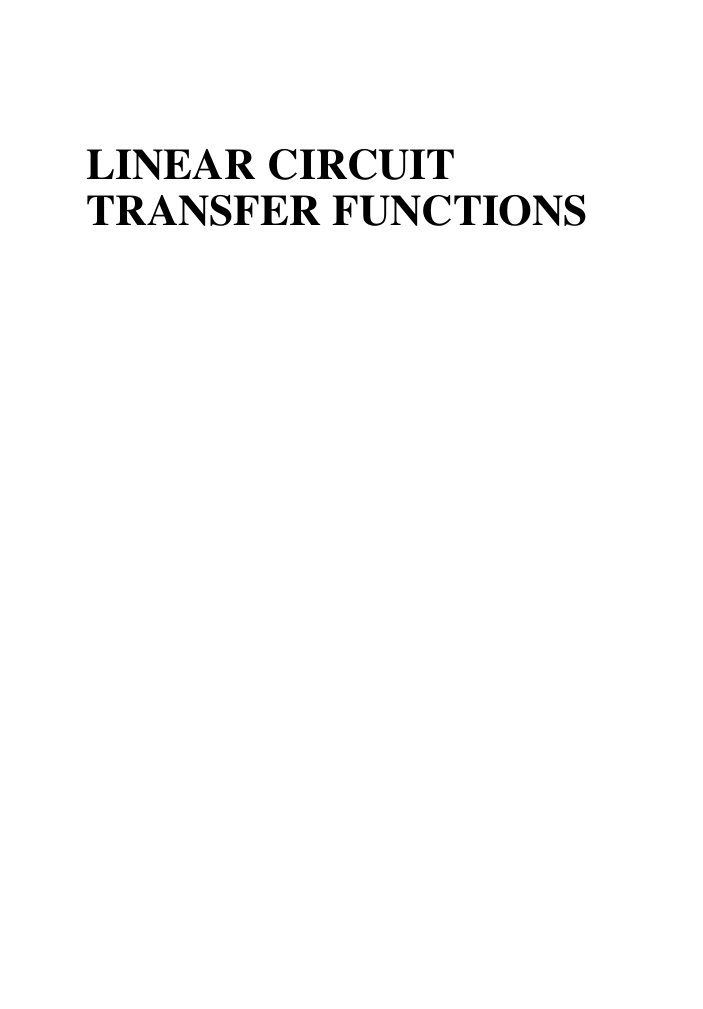

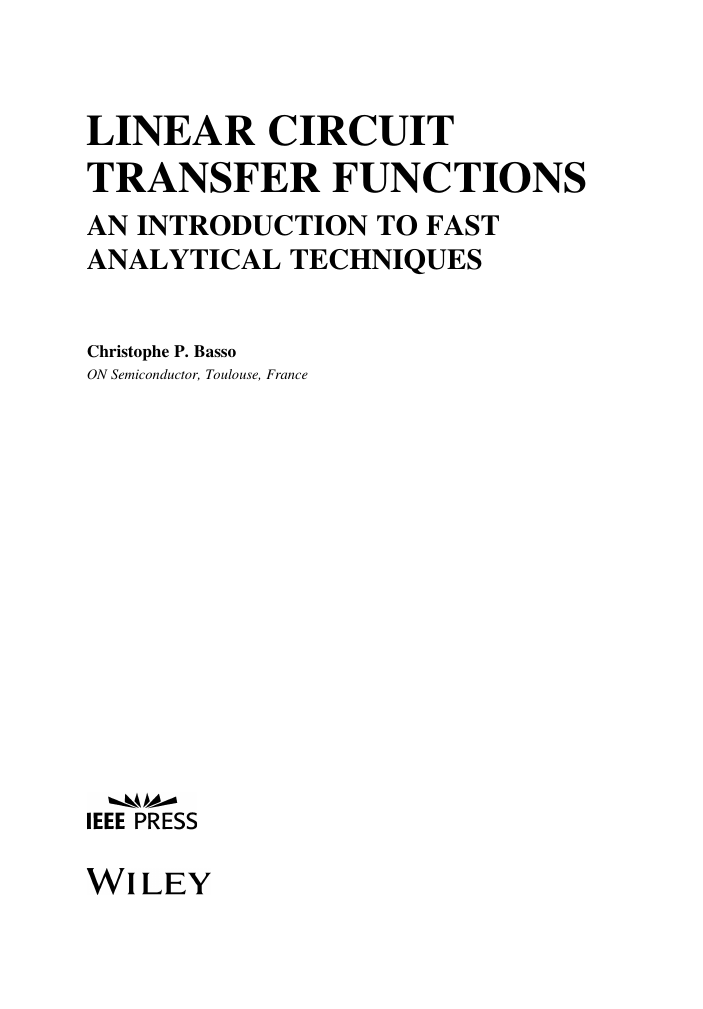

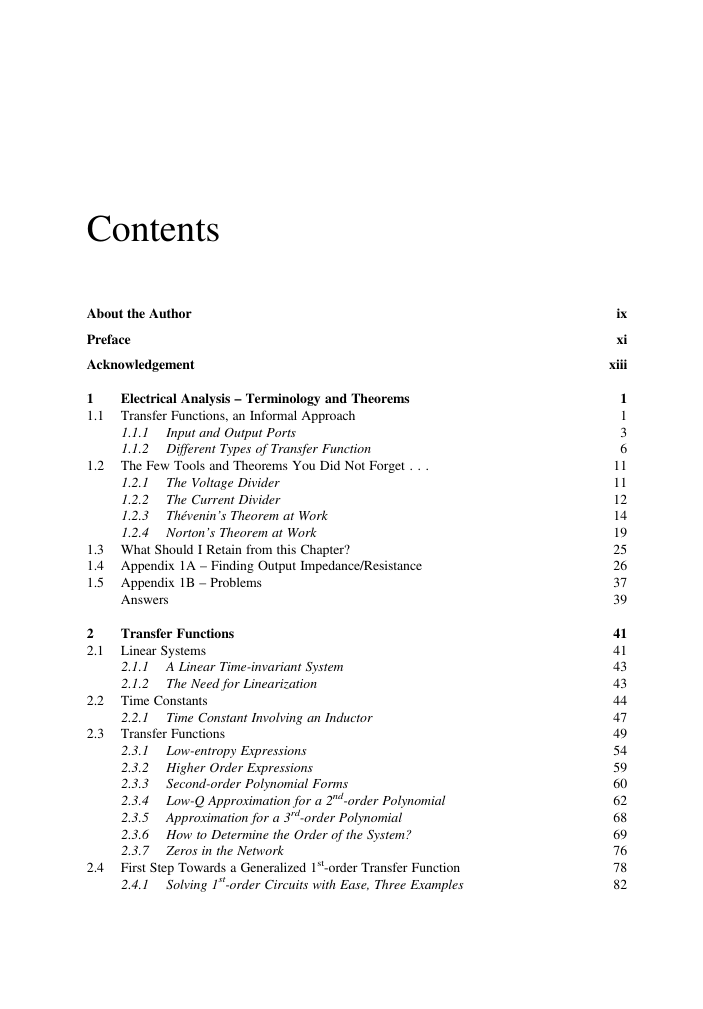
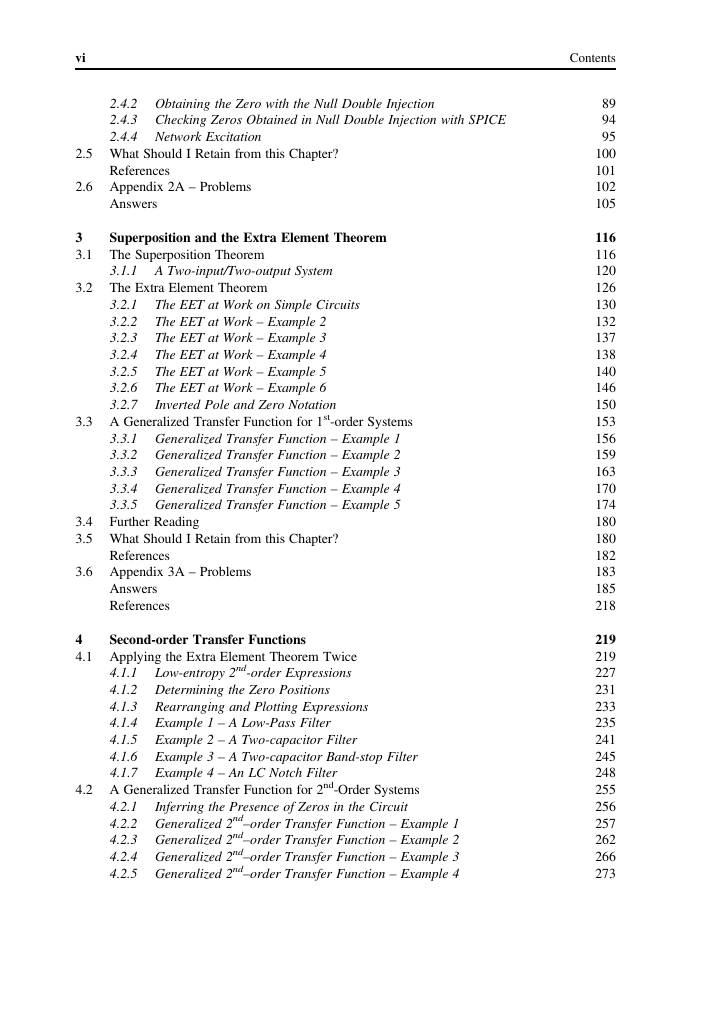








 2023年江西萍乡中考道德与法治真题及答案.doc
2023年江西萍乡中考道德与法治真题及答案.doc 2012年重庆南川中考生物真题及答案.doc
2012年重庆南川中考生物真题及答案.doc 2013年江西师范大学地理学综合及文艺理论基础考研真题.doc
2013年江西师范大学地理学综合及文艺理论基础考研真题.doc 2020年四川甘孜小升初语文真题及答案I卷.doc
2020年四川甘孜小升初语文真题及答案I卷.doc 2020年注册岩土工程师专业基础考试真题及答案.doc
2020年注册岩土工程师专业基础考试真题及答案.doc 2023-2024学年福建省厦门市九年级上学期数学月考试题及答案.doc
2023-2024学年福建省厦门市九年级上学期数学月考试题及答案.doc 2021-2022学年辽宁省沈阳市大东区九年级上学期语文期末试题及答案.doc
2021-2022学年辽宁省沈阳市大东区九年级上学期语文期末试题及答案.doc 2022-2023学年北京东城区初三第一学期物理期末试卷及答案.doc
2022-2023学年北京东城区初三第一学期物理期末试卷及答案.doc 2018上半年江西教师资格初中地理学科知识与教学能力真题及答案.doc
2018上半年江西教师资格初中地理学科知识与教学能力真题及答案.doc 2012年河北国家公务员申论考试真题及答案-省级.doc
2012年河北国家公务员申论考试真题及答案-省级.doc 2020-2021学年江苏省扬州市江都区邵樊片九年级上学期数学第一次质量检测试题及答案.doc
2020-2021学年江苏省扬州市江都区邵樊片九年级上学期数学第一次质量检测试题及答案.doc 2022下半年黑龙江教师资格证中学综合素质真题及答案.doc
2022下半年黑龙江教师资格证中学综合素质真题及答案.doc